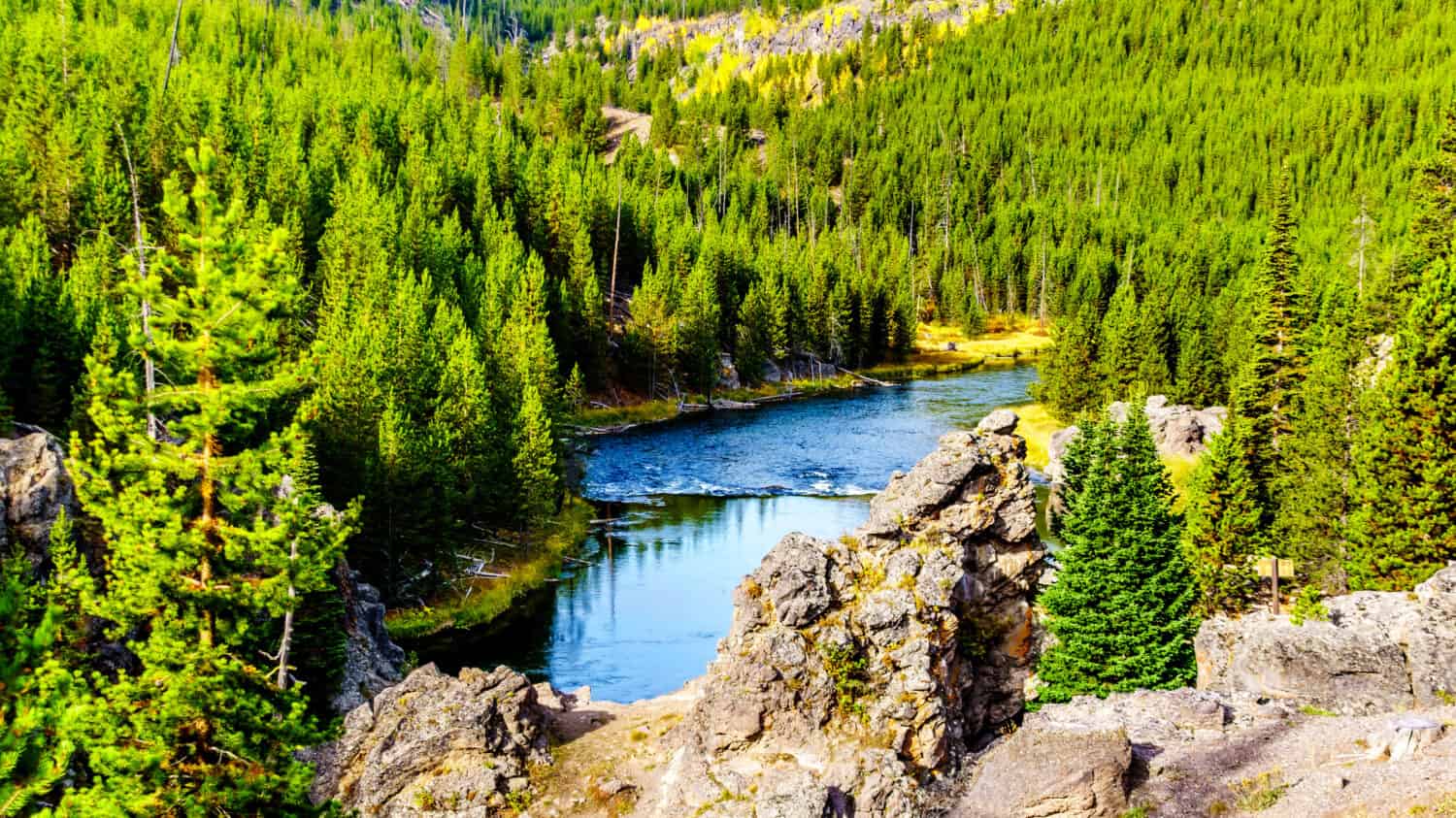Yellowstone National Park is chock full of life! Everywhere you look there seems to be another critter bustling about. The park has one of the most diverse ecosystems, covering over 2.2 million acres that sprawl Wyoming, Montana, and Idaho. And that means there’s plenty of room for all the wildlife to flourish. Over 67 unique species of mammals call the park their home. And there are even a few dangerous animals in Yellowstone. Additionally, this is the only place in the country to see gray wolves and grizzly bears in their natural habitat.
The lakes and rivers in the park play a crucial role in creating an ideal habitat for many animals. But let’s be clear, we don’t encourage anyone to go searching for dangerous critters in the water! Simply remain aware of Yellowstone’s three dangerous animals found in the park’s lakes and rivers.
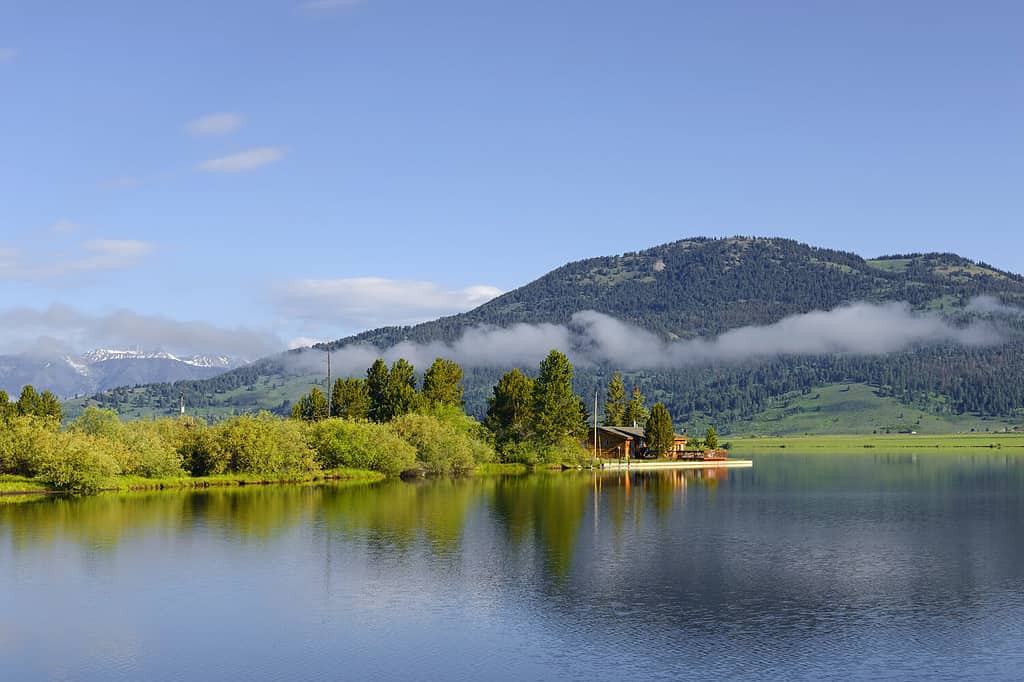
Hebgen Lake is just one of many lakes near West Yellowstone, located in Southwest Montana.
©Pecold/Shutterstock.com
1. Western Rattlesnake
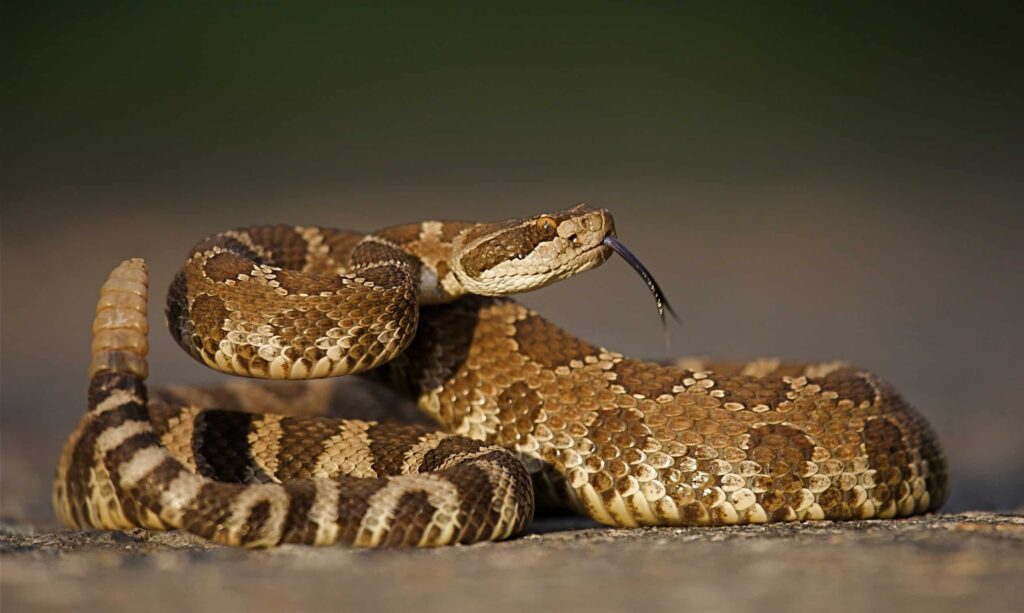
The western rattlesnake is the most dangerous snake found in Yellowstone National Park.
©Tom Reichner/Shutterstock.com
The western rattlesnake, also known as the prairie rattlesnake, is the only venomous snake in Yellowstone National Park. These snakes can grow up to 4 feet in length and are potentially dangerous to humans.
Western rattlesnakes are typically found in rocky areas, grasslands, and mixed forests. They are known for their distinctive rattling sound, which they use to warn potential predators. While these snakes are generally not aggressive, they can be dangerous if provoked or surprised. Their venom can cause serious harm to humans.
Visitors should be aware of the potential presence of western rattlesnakes, particularly if they are exploring rocky areas or grasslands. It’s important to maintain a safe distance from any snakes encountered and to avoid handling or otherwise disturbing them. In the event of a snake bite, visitors should seek medical attention immediately.
2. Giant Water Bug
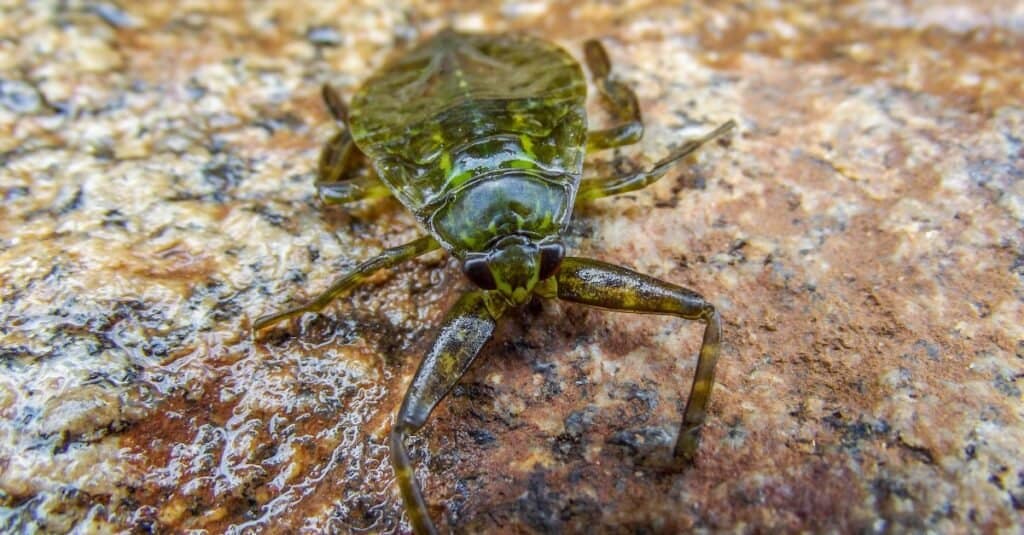
Giant water bugs can be found in Yellowstone and are known to bite if antagonized.
©iStock.com/Eric Kukulowicz
If you’re headed to Yellowstone, be aware of the fascinating wildlife, including the giant water bug! These fascinating insects are typically found hanging out in lakes and rivers throughout the park. But you won’t want to mess around with these guys.
Giant water bugs, as their name suggests, are big bugs that are known for their predatory prowess. They have powerful front legs that they use to snatch up prey in shallow freshwater habitats. These well-camouflaged bugs can be hard to spot since they hide among the vegetation just underneath the water’s surface.
These insects won’t come after humans unprovoked. However, if you try to handle them, they may bite you, and it won’t be pleasant. Their bites can easily pierce the skin and cause serious swelling, redness, and intense pain.
Remember, the wildlife in Yellowstone can be unpredictable, and it’s important to respect both the animals and their habitats. If you stumble across a giant water bug, maintain a safe distance and admire it from afar. And of course, if you do happen to get bitten, seek medical attention ASAP.
3. Grizzly Bear
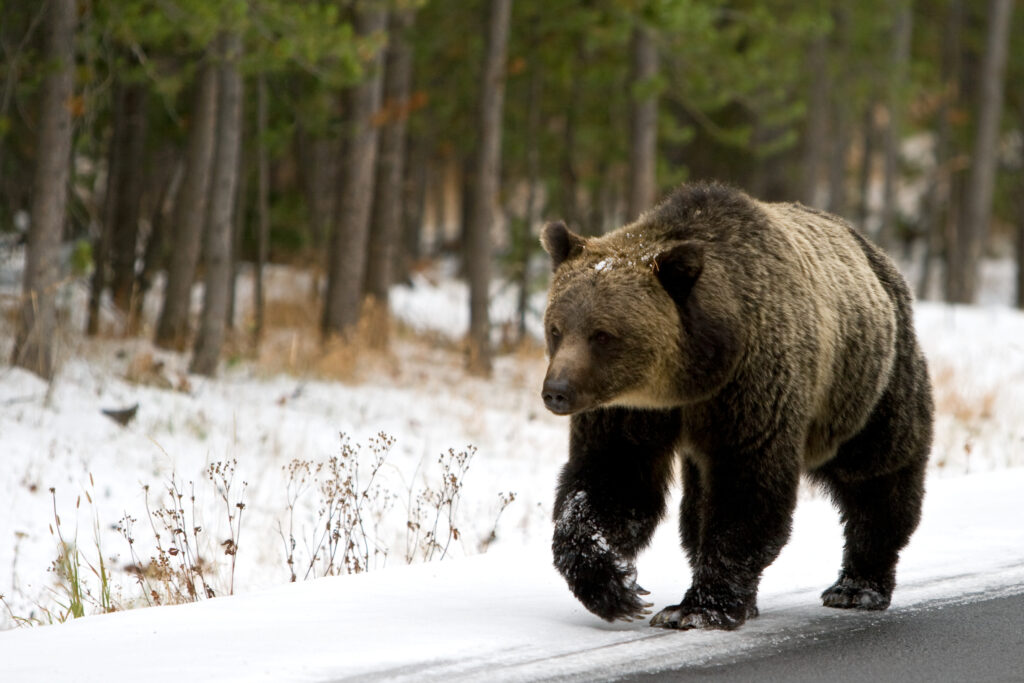
Yellowstone grizzly bears can be at their most dangerous when they first emerge from hibernation.
©Paul Knowles/Shutterstock.com
Yellowstone is famed for its population of grizzly bears, many of which reside near rivers, where they hunt fish. Yellowstone’s grizzly population is one of the largest in the lower 48 states. These majestic predators can weigh a whopping 600 pounds! They are most easily distinguished by the noticeable hump located between their shoulders.
Though encounters between humans and grizzly bears are frequently peaceful, they can take a dangerous turn if a bear feels provoked or threatened. Visitors planning to hike through bear country in Yellowstone National Park should take preventative measures. For example, hikers should always carry bear spray and hike in groups.
In the event that you do encounter a bear, it’s important to stay calm. Disengage slowly without making any sudden movements or direct eye contact. Abrupt movement or a quick getaway may unlock the grizzly’s instinct to hunt and attack.
Bear activity in campsites can be curbed by correct storing of food and other potential attractants. Following park guidelines is vital in ensuring both your well-being and the welfare of the bears.
In Conclusion
As you plan an adventure to explore the aquatic life in Yellowstone National Park, keep in mind that most of the animals living in the rivers and lakes pose no threat to humans. You’ll come across adorable creatures like beavers, muskrats, and otters, which are typically quite harmless unless disturbed.
However, there are a handful of dangerous animals in Yellowstone. It’s important to be extra cautious when you’re navigating through the park. Make sure you keep a good distance from any animals that you might encounter and show them respect without impeding their habitat. When it comes to enjoying Yellowstone, teamwork between visitors and animals is the best way to go!
Thank you for reading! Have some feedback for us? Contact the AZ Animals editorial team.

